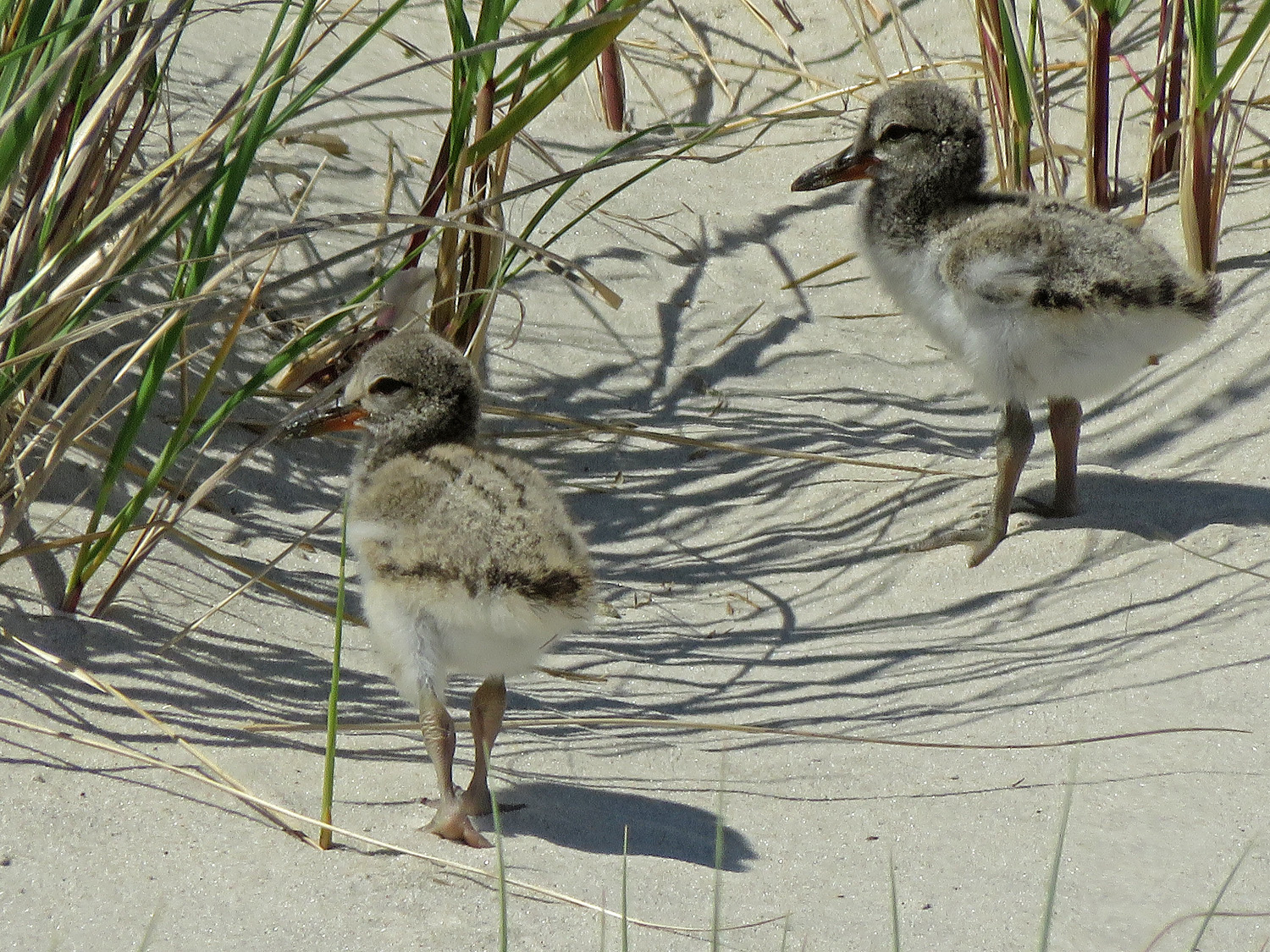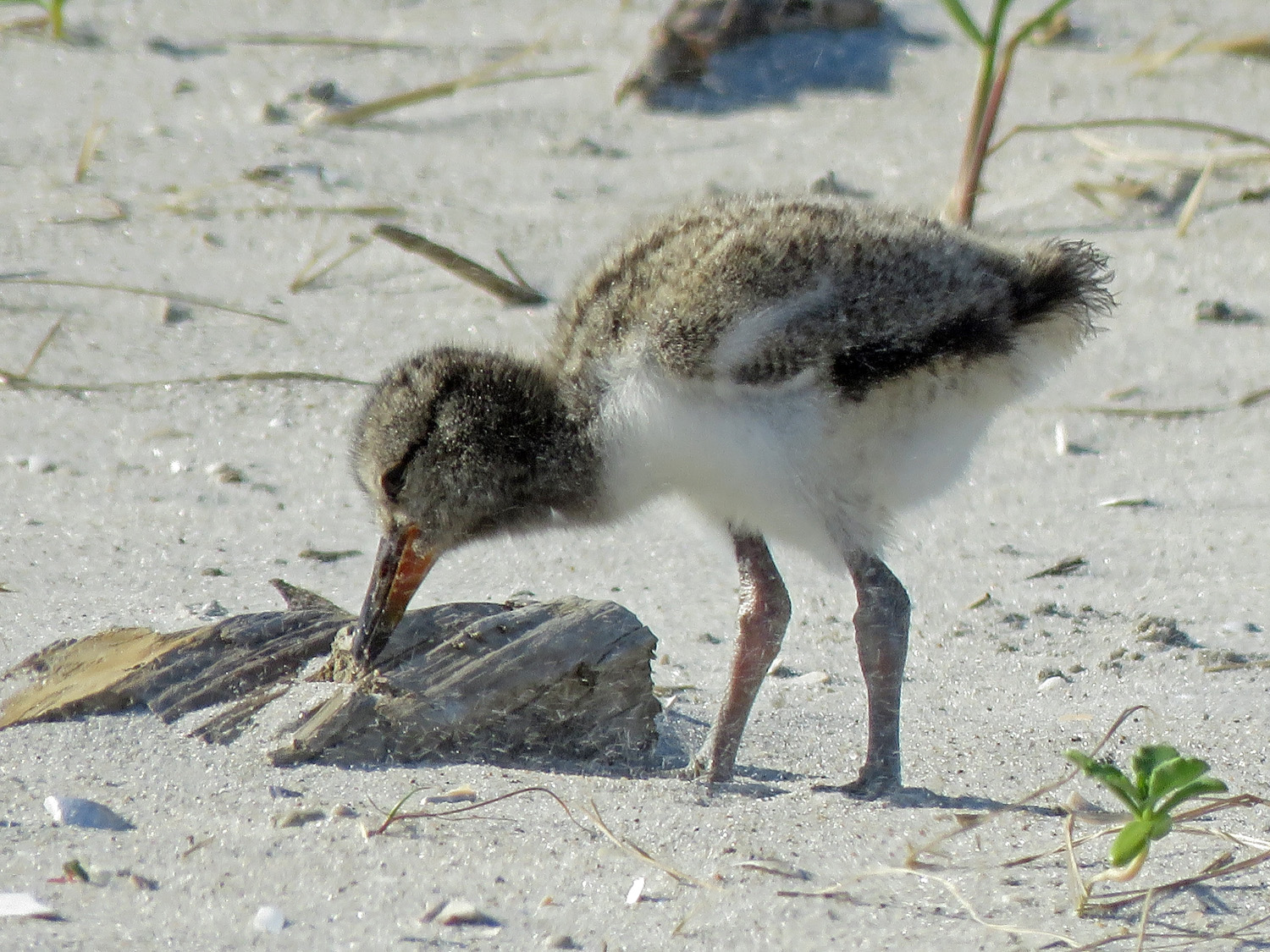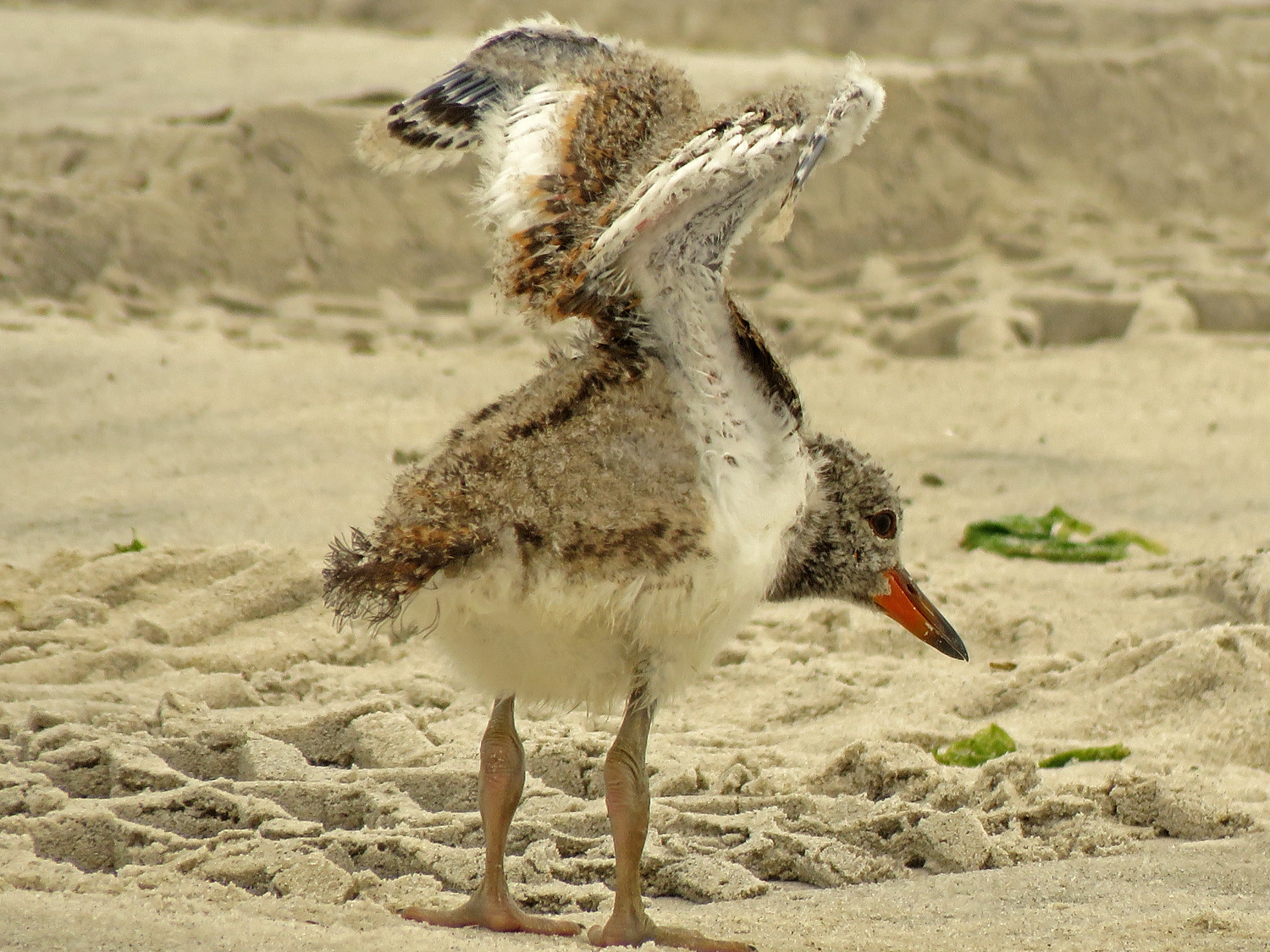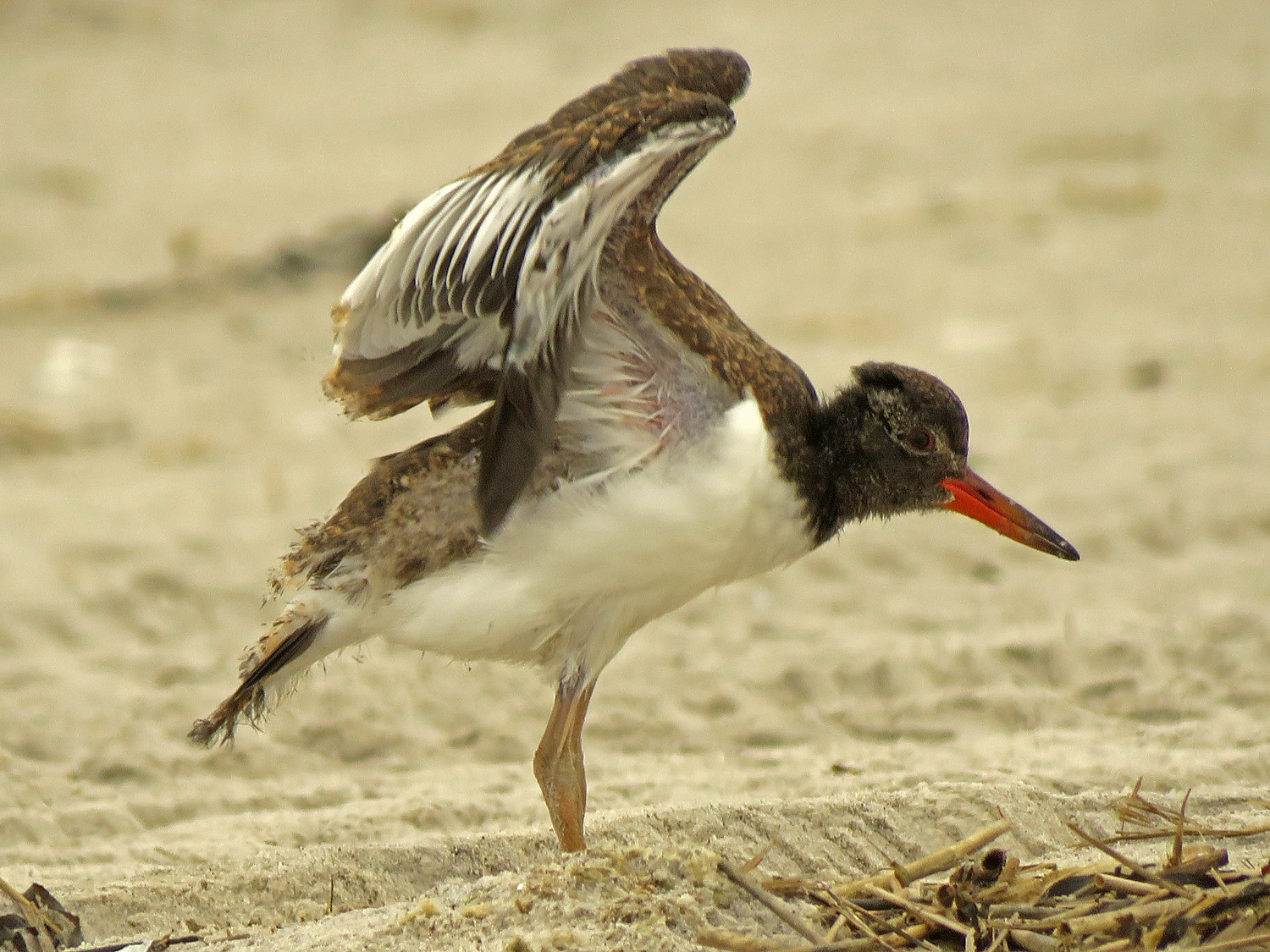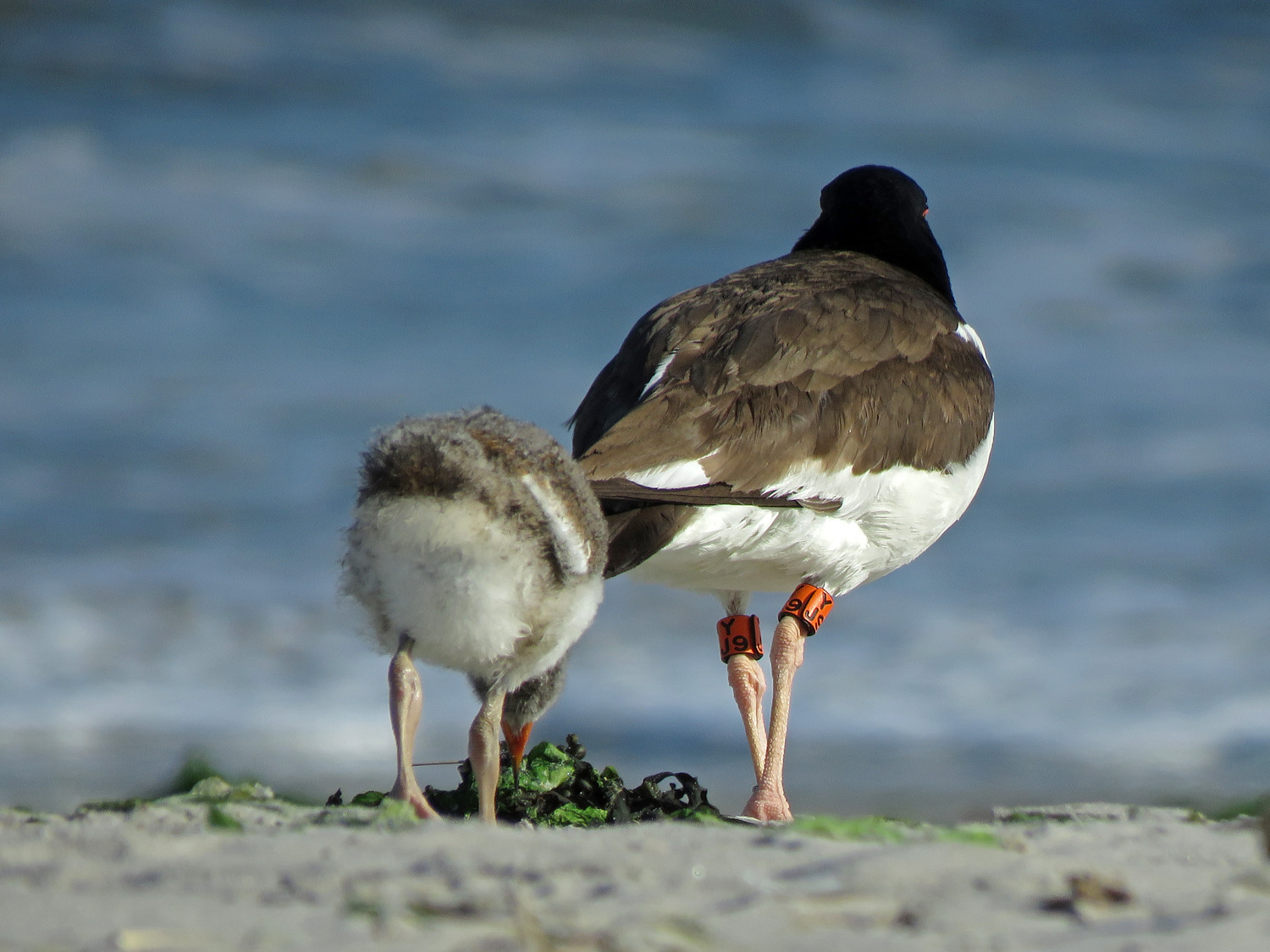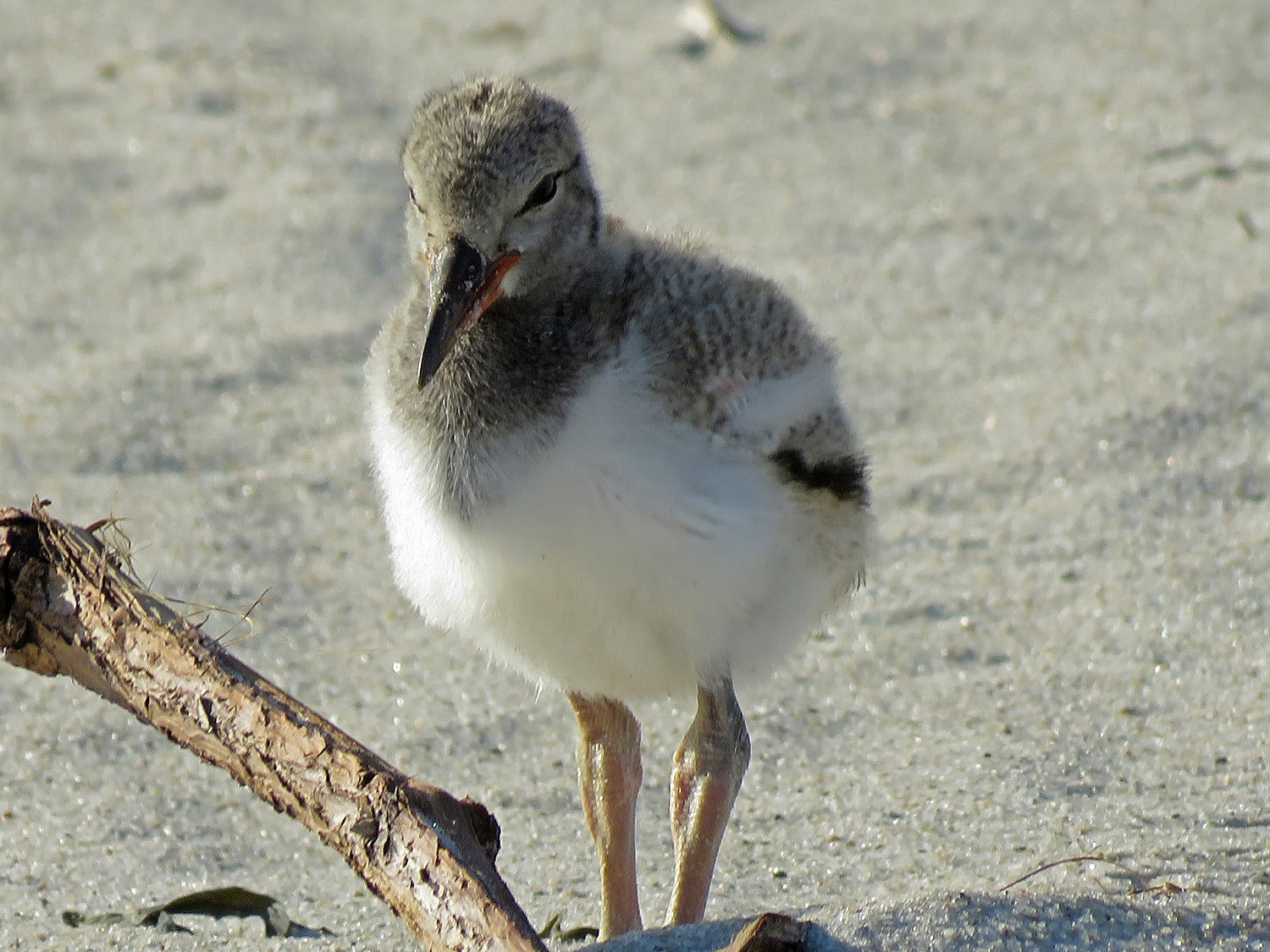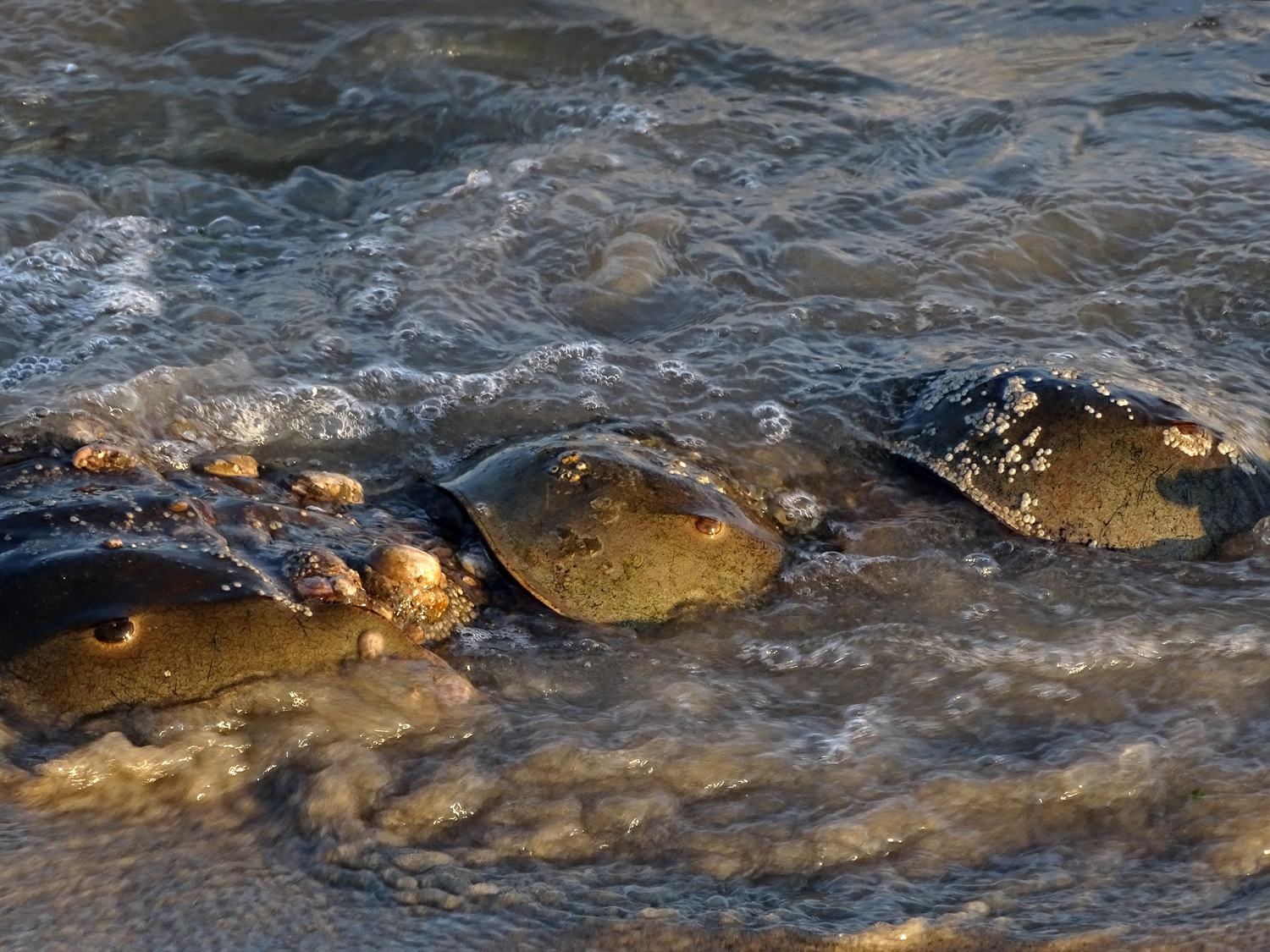There are very few critters cuter than baby birds, and Nickerson Beach on Long Island has provided a nursery for piping plovers, American oystercatchers, black skimmers, common terns, and least terns, and probably several kinds of gulls, for several years. I have spent much of this summer filming the little ones and taking baby pictures. Since the oystercatchers are some of the first chicks to hatch, they are the first to have their own Silly Videos and photo galleries.
Oystercatcher family, June 12, Nickerson Beach
Several of the beaches in New York have protected areas cordoned off to allow these birds to nest relatively undisturbed. The oystercatchers are usually the first to stake out their breeding homes, and their kids are the first to hatch. If you get too near to the string “ropes” protecting the dunes, the parents will buzz you, and if you don’t go away, they will sometimes stalk you with backs raised or fake a broken wing to distract you from their chicks.
Mama American oystercatcher and two little kiddies, June 4, Nickerson Beach
There are two videos chronicling the oystercatcher families that I saw on the beach. The first part of The Kids Are All Right shows the families from May second to June 12 and features music by Saint-Saens. The second part also has bassoon accompaniment with music by Jadin and Freithoff.
The oystercatcher kids are just the cutest little birdies I’ve ever seen, and it was so much fun to photograph them. The photos in this slide show were taken June 4 through June 17.
The photos of adult oystercatchers and their youngsters were taken May 2 through July 30.



